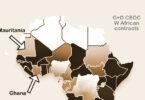There have been numerous strong research papers covering Central Bank Digital Currencies (CBDC). Last month, the International Monetary Fund (IMF) produced one that pulls together the published research in a structured way.
It does so by exploring the variety of potential motivations that might drive a retail CBDC issuance, the design considerations that follow, and the legal, governance and cybersecurity aspects.
Is there a need for a CBDC?
In terms of motivation, the reasons to issue a CBDC will vary significantly from one country to another. One spur may be to increase competition where there are a small number of payment providers. Certainly, for China and Sweden, monopolies or oligopolies are a major driver. In these cases, a CBDC is desirable because private companies could have insufficient cybersecurity, or become inefficient due to a monopolistic position or exploit their position either via pricing or selling customer data.
Another reason for a CBDC is to support digitization and to enable financial inclusion in countries with underdeveloped payment systems.
There’s scope for a CBDC to improve monetary policy effectiveness, especially with negative interest rates. If there’s a need to stimulate the economy, a CBDC could also be designed to incentivize people to spend it quickly or incur a fee. Access to granular payment data could enable a more targeted monetary policy, especially for seasonality, natural disasters and consumer behavior.
Facebook’s Libra seems to have envigorated CBDC discussions, so a central bank digital currency could preserve monetary sovereignty compared to a potential global stablecoin such as Libra.
In countries outside of the U.S. where the dollar is used heavily for payments, a CBDC could help to reduce dollarization. Here Cambodia’s quasi – CBDC might be an example, although it’s not included in the paper.
Finally, a CBDC could be used as a payment rail for social contributions or stimulus such as COVID-19. This is a topic that was debated in the U.S. and achieved in South Korea using regional currencies.
The IMF then considered risks, preconditions such as infrastructure and regulations, and how to weigh up the costs and benefits.
Design considerations
Each country has different reasons for potentially adopting a digital currency, and these are likely to influence the CBDC’s design. First off is the operating model. Will it be single tier, two tier – as in distributing digital cash via banks – or even multi tier? Is the central bank happy to compete with other payment service providers?
The next decision is whether it should be centralized or decentralized. Here, the suggestion was definitive. “Permissioned DLT-based platforms appear to be better suited for retail CBDC due to governance and oversight considerations,” says the paper. “Permissionless platforms (with decentralized authority), on the other hand, fall short on scalability, and settlement finality, and financial integrity risk management.”
A CBDC design topic that is often raised is the issue of privacy versus transparency. Cash provides privacy, but in most countries, digital currencies are only likely to retain anonymity up to a certain transaction amount because of anti-money laundering rules.
That impacts the topic of limitations and availability of a CBDC. In addition to transactions, the amount of CBDC holdings may also be limited. Some countries might restrict the CBDC use within its own borders with limited access for incoming tourists. There’s also the question of enabling a CBDC for offline use in remote areas or if there are power outages. That’s something Japan has explored very recently. Plus, not everybody has a smartphone, so there may need to be options.
Next is the consideration of whether a CBDC should be interest bearing or carry transaction fees. After all, there will still be intermediaries involved, such as payment service providers who need to earn a profit. Nowadays, banks charge merchants for handling cash in many countries.
Programmable money is seen as being attractive in some sectors. This could involve automated transfers. In Australia, there was a trial to ensure disability payments were only used for narrow purposes, not for buying coffee. But the paper highlights that this programmability also comes with new risks.
And the final decision area relates to technology selection and project management.
The IMF paper covers these topics and several more in far greater depth. At the same time, it helps to distill the knowledge base in a structured way. The only downside is the research is evolving at such a rapid pace, it will need to be updated soon.
Seven months ago, the Bank of Lithuania issued another paper reviewing existing initiatives.







